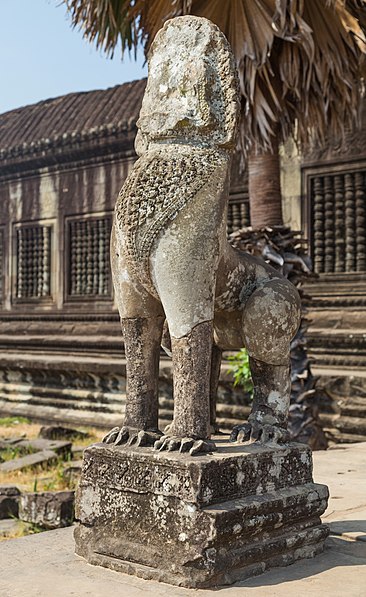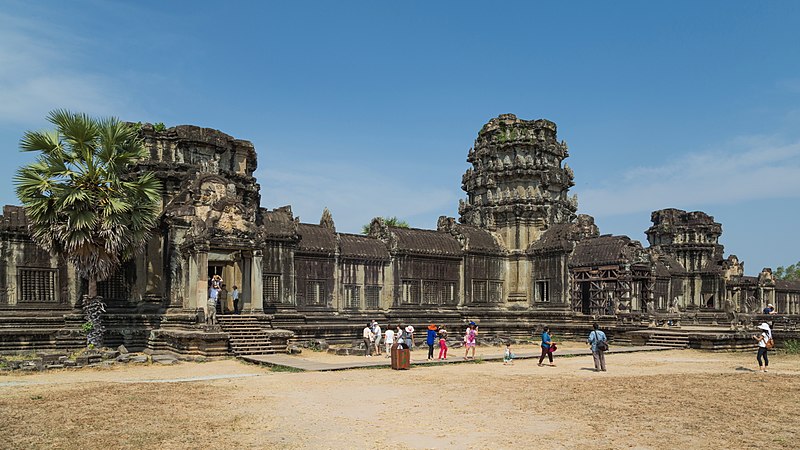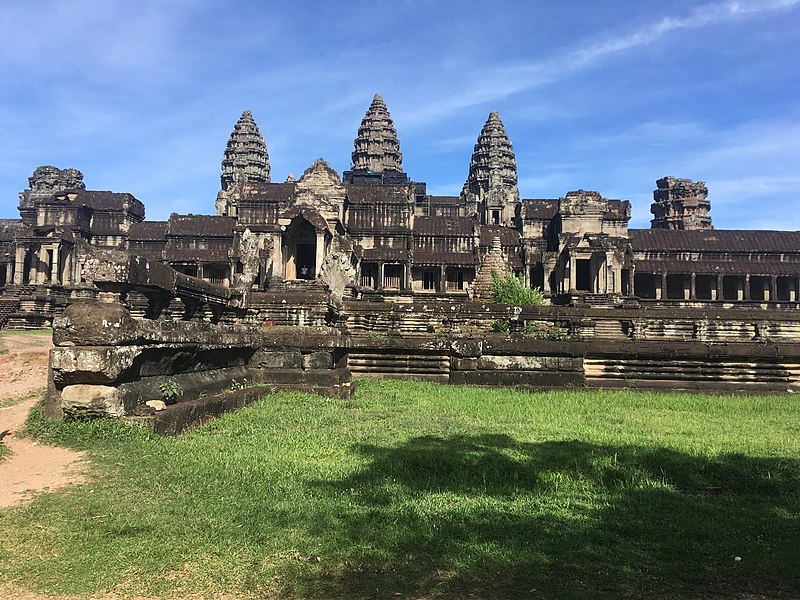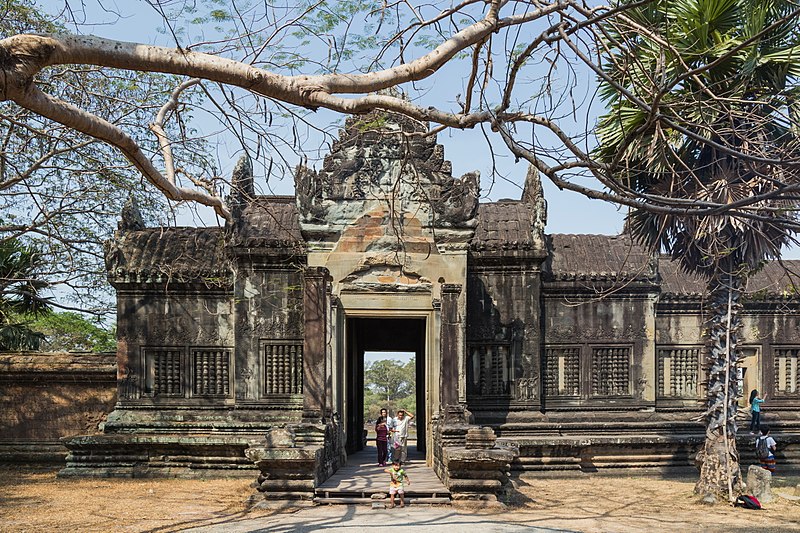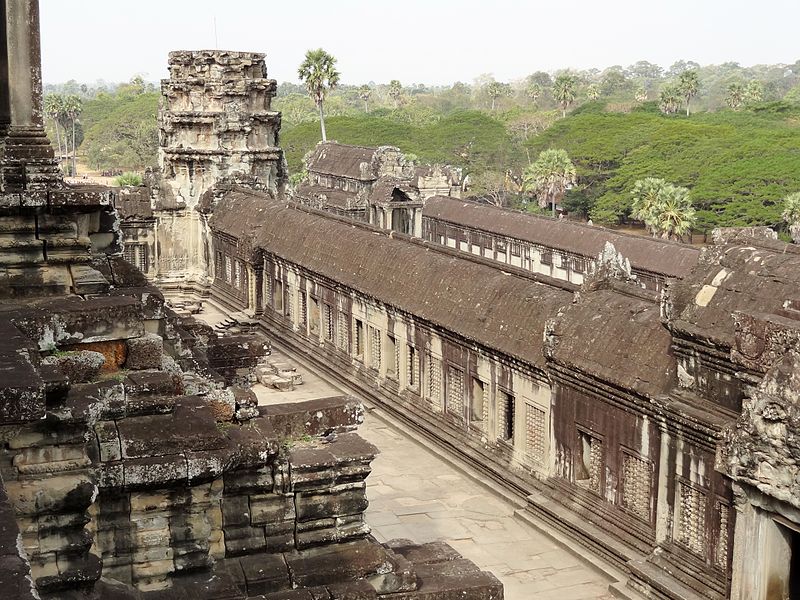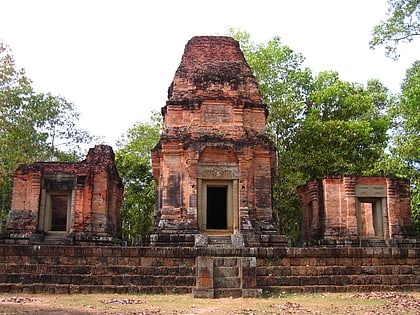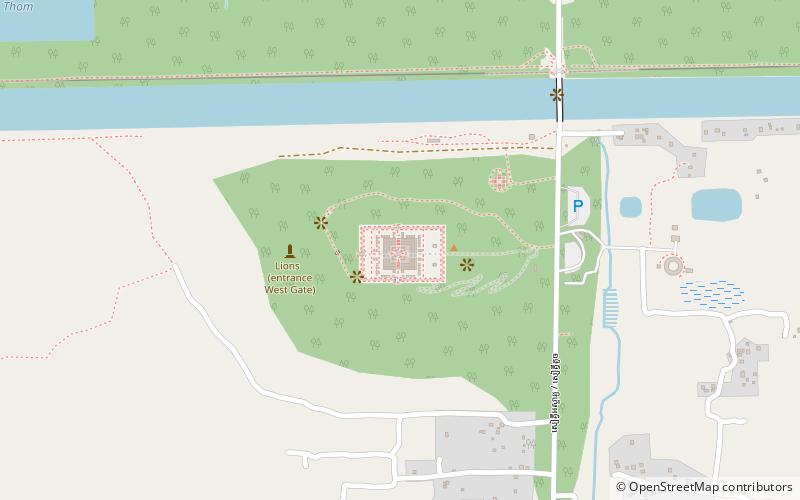Angkor Wat, Siem Reap
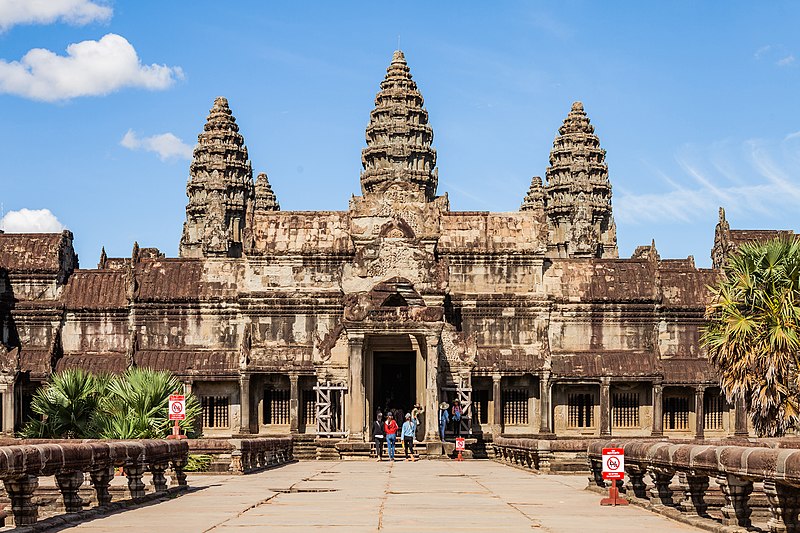
Facts and practical information
Angkor Wat, a sprawling temple complex in the city of Siem Reap, Cambodia, stands as a magnificent testament to the Khmer Empire's architectural mastery and religious devotion. This UNESCO World Heritage site, dating back to the early 12th century, was originally constructed as a Hindu temple dedicated to the god Vishnu. Over time, it gradually transformed into a Buddhist center of worship.
Covering an area of over 162 hectares, Angkor Wat is often hailed as the largest religious monument in the world. The temple's design epitomizes classical Khmer architecture, featuring a quincunx of towers and a multitude of intricate bas-reliefs depicting mythological and historical scenes. The central tower rises to a height of 65 meters, symbolizing the mythical Mount Meru, believed to be the home of the gods in Hindu cosmology.
The temple's orientation to the west, a direction typically associated with death in Hindu culture, has led scholars to surmise that Angkor Wat was also intended to serve as a mausoleum for its patron, King Suryavarman II. Its moat and outer walls symbolize the oceans and mountains at the edge of the world according to Hindu myth.
Angkor Wat is a pinnacle of spiritual significance and a prime example of the high classical style of Khmer architecture. Its corridors are adorned with extensive galleries of bas-reliefs, narrating stories from the Ramayana and Mahabharata epics, as well as scenes from the day-to-day life of the Angkorian Khmer.
The temple complex is a central attraction for both pilgrims and tourists, drawing millions of visitors annually. Despite the wear of time and nature, Angkor Wat has remained largely intact, thanks in part to the use of sandstone as a primary building material, allowing for detailed carving that has endured for centuries.
Open to visitors all year round, the site offers a glimpse into the spiritual and cultural heart of the Khmer civilization. The best time to visit is early morning when the sun rises over the temple, casting a golden hue over the ancient stones and reflecting pools, creating a moment of awe-inspiring beauty.
Angkor Wat – popular in the area (distance from the attraction)
Nearby attractions include: Phnom Bakheng, Baksei Chamkrong, Ta Prohm Kel, Prasat Bei.
Frequently Asked Questions (FAQ)
When is Angkor Wat open?
- Monday 5 am - 10 pm
- Tuesday 5 am - 10 pm
- Wednesday 5 am - 10 pm
- Thursday 5 am - 10 pm
- Friday 5 am - 10 pm
- Saturday 5 am - 10 pm
- Sunday 5 am - 10 pm


